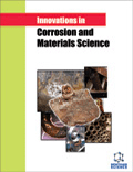Abstract
Background: Natural fiber reinforced polymers are finding enormous applications in fields of automobile and house hold applications due to its distinct advantages over synthetic fiber reinforced polymer composites. In order to meet the escalation in demand of natural fiber reinforced composites, quick and versatile processing methods have to be adopted by the industry. Injection molding, being a promising method for this purpose has been chosen for the present study in order to reinforce short kenaf fibers into polypropylene.
Methods: Kenaf fiber reinforced PP based composites having a fiber weight fraction of 30% were fabricated using injection molding process. Mechanical properties and fiber distribution of the developed composites were evaluated in comparison to neat polypropylene and maleic anhydride grafted polypropylene (MAPP). Mechanical properties in terms of flexural and tensile strength of the developed composites were evaluated in accordance to respective ASTM standards.
Results: The flexural strength of PP/(30)K composite increased marginally, while the flexural strength of PP/(30)K/(5)MAPP composite was found to be significantly higher than both neat PP and PP/(30)K composite. Tensile strength of PP/(30)K composite is found to deteriorate with the addition of untreated short kenaf fibers. However, the addition of MAPP into the matrix improves the tensile strength of the developed composites. The flexural and tensile modulus of the developed composites also increased significantly compared to neat PP indicating increased stiffness of the developed composites. Morphological investigation of the developed composites revealed uniform distribution of short kenaf fibers throughout the composite and improved interfacial bonding in case of PP/(30)K/(5)MAPP composites resulting in better mechanical properties.
Conclusion: Short kenaf fiber reinforced polypropylene composites having fiber weight fraction of 30% were successfully developed through injection molding process. Injection molding process for the fabrication of natural fiber reinforced composites is found to be a viable option and short kenaf fibers also have tremendous potential to be used as a reinforcement in natural fiber reinforced composites.
Keywords: Injection molding, Kenaf fiber, maleic anhydride grafted PP, natural fiber composites, polypropylene.
 22
22 3
3





